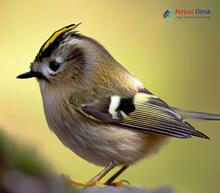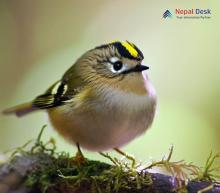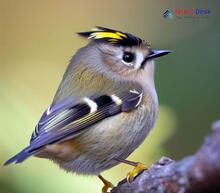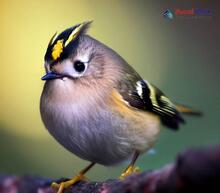The Regulus genus is a captivating collection of tiny passerine birds, known as kinglets or crests, that have seized the interest of bird lovers and scientists alike. The allure of these little birds lies in their one-of-a-kind evolutionary story, unique physical traits, natural adaptations, and distribution across the globe. In this article, we'll dive deep into the captivating world of Regulus genus by examining its evolutionary tree, physical features, adaptations to different environments, and their existence in the biodiversity-rich nation of Nepal.
Uncovering the Evolutionary Origins of Regulus Genus
The Regulus genus belongs to the Regulidae family and consists of various species. Modern genetic studies have granted researchers the ability to understand relationships between these species and gain insights into their ancient past. Molecular analysis has disclosed that around 12-15 million years ago, the Regulus genus branched off from its closest relatives. The six recognized species have been categorised into three separate clusters: the Goldcrest group (Regulus regulus), Firecrest group (Regulus ignicapilla), and Ruby-crowned Kinglet group (Regulus calendula). These classifications imply a convoluted evolutionary journey characterized by both diversification and convergent evolution.
Examining Their Unique Features
Kinglets rank among Earth's tiniest birds; measuring between 3-5 inches long and weighing a mere 5-10 grams. Despite their small stature, they possess an impressive array of distinct physical features that differentiate them from other species. One iconic trait they possess is a dazzling crown atop their heads – an area of brightly colored feathers that can be raised or lowered for communication purposes. Additionally, kinglets have slender bills with curved tips perfect for catching insects.
Ecological Strategies for Survival
In spite of their small size, kinglets have evolved an array of ecological strategies to ensure their survival and reproductive achievements. These birds are well-adapted for life in thick forests, creating their nests high in coniferous trees. Their primary diet consists of insects and other arthropods, demonstrating their adaptability to available resources in their habitats. Moreover, some species display advanced social behavior by forming close family groups during breeding seasons to increase their chances of survival.
Kinglets Making Their Home in Nepal
Nepal is renowned for its incredible biodiversity, and the presence of the Regulus genus only adds to this reputation. The Goldcrest (Regulus regulus) has been spotted in the higher-altitude forests of Nepal, especially during the migration seasons bookended by winter and summer. This presence emphasizes the impressive range these small birds can achieve and highlights the importance of preserving Nepal's biodiversity.
To wrap it up, delving into the Regulus genus offers fascinating insights into their evolutionary history, physical characteristics, ecology, and geographic distribution. The existence of these stunning and distinct creatures reminds us of nature's priceless treasures and encourages us to preserve our environment. So next time you're pondering over the breathtaking wonders of Earth's rich biodiversity, don't forget to admire the small things too - like the incredible kinglets from the Regulus genus!




